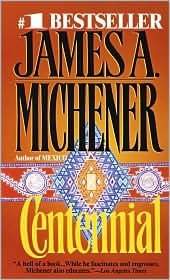
Centennial is one of my favorite books. The book has always stuck with me, although I confess that I last read it in high school (about 10 years ago for anyone counting). What has stuck with me the most is the story of the land, and the people living on it and from it. The story is both beautiful and ugly simultaneously. I would like to read it again when I have a week at the beach sometime. It’s a good book.
While sitting in the sun Down East this weekend, I found myself thinking about Centennial and how the author uses the land to shape his characters. I have always felt connected to the land in eastern
This weekend I thought about Centennial a few times, as it so beautifully describes the connection between the land and human life. While in
Oh, how they must miss that land after they leave. So many of them now live in North Carolina, and I can only imagine how much they miss the way things once were in the central highlands of Vietnam. In our interviews, the longing for home is almost palpable.
The history of the Montagnards is directly related to the lands they once inhabited in relative isolation. They knew the land, how to farm it and care for it. It was their livelihood. And knowing that, I now understand how land reform has been used to hurt the Montagnards. By limiting the amount of land available to farm, it limits other things like the amount of food available for the Montagnards.
This is not something that happened once, during the war many years ago. The persecution of the Montagnards continues today. My visit to my own homeland this weekend kept me thinking about the Montagnards, and how connected they are to the central highlands of